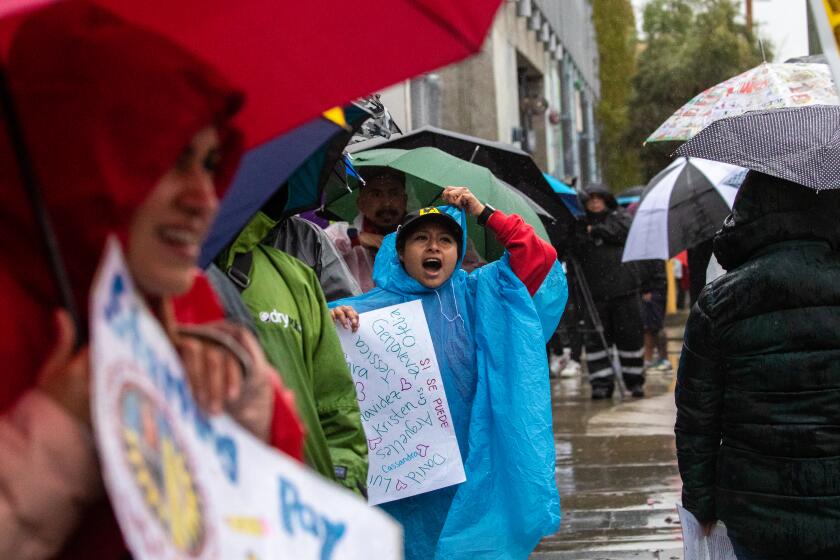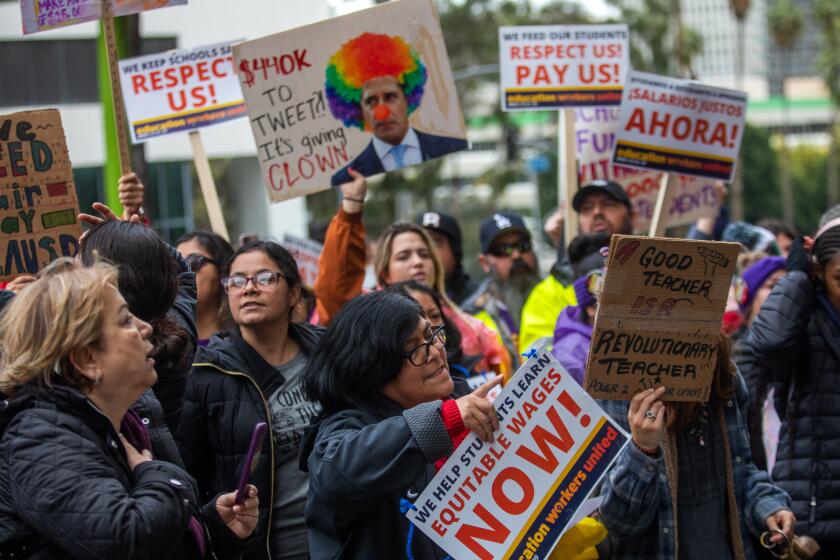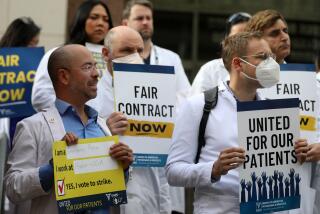LAUSD and union workers who led massive strike reach tentative settlement
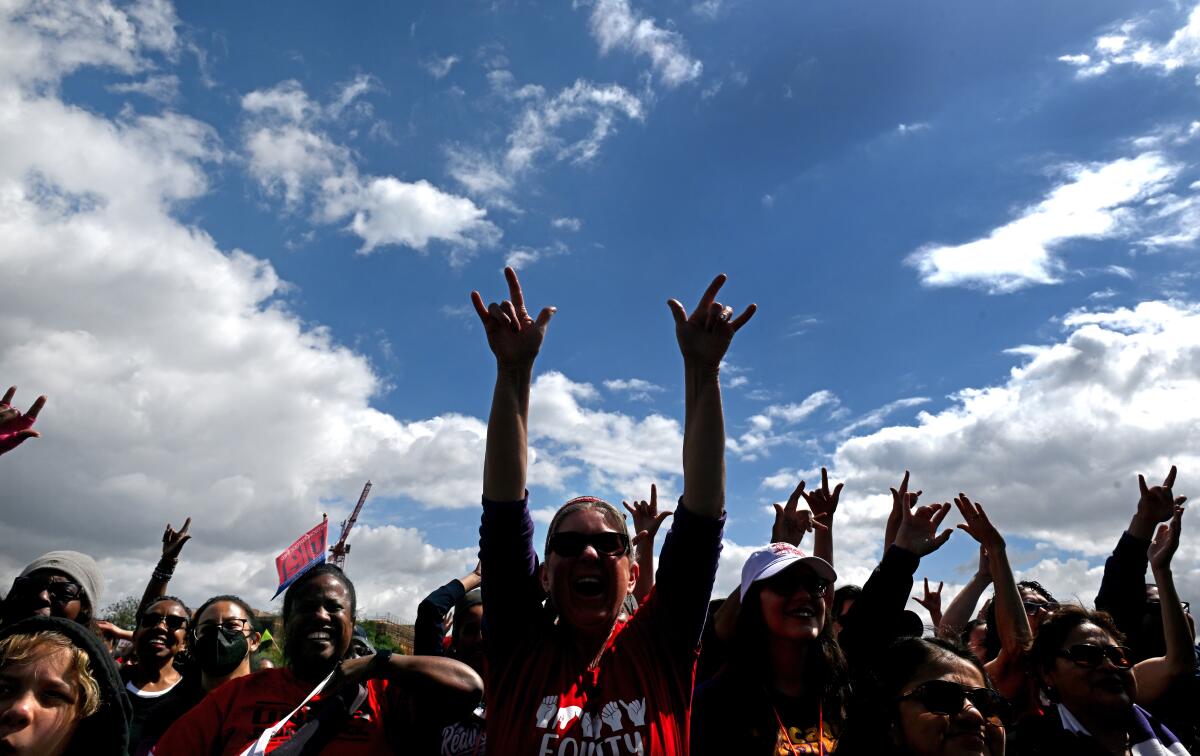
- Share via
A tentative agreement reached Friday between the Los Angeles Unified School District and the union representing support staff won raises of about 30% or more for the lowest-wage workers, one day after the end of a strike that shut down schools for three days.
If approved by union members, the agreement — achieved after mediation with Mayor Karen Bass — could prevent campuses from being closed again to 420,000 students and spare workers from job actions that would have been difficult to bear.
Local 99 of the Service Employees International Union — which represents about 30,000 employees and includes bus drivers, teacher aides, special-education assistants, custodians and food service workers — led the strike that began Tuesday and ended Thursday. Also on strike in solidarity were members of United Teachers Los Angeles, which represents about 35,000 teachers, counselors, therapists, nurses and librarians. UTLA remains in negotiations over its contract.
The deal with Local 99 is not an across-the-board increase but spread out over time and also affected by length of service and current salary — so that some workers will receive less than 30% and some more.
LAUSD bus drivers, custodians, teachers, classroom aides and cafeteria workers join wet, cold picket lines at shuttered schools across the district.
“Here in California this agreement will set new standards, not just for Los Angeles, but the entire state,” Max Arias, executive director of Local 99, said in a joint news conference at City Hall with Bass and L.A. schools Supt. Alberto Carvalho, who called it “a historic day.”
Hinting at the acrimony of the rhetoric during the dispute, Bass said the agreement would move the parties toward collaboration.
“Executive Director Arias and Supt. Carvalho stepped up in such a big way,” she said. “I am hopeful that is the beginning of a new relationship that
will lead to a stronger LAUSD.”
A broader context
All three leaders talked of a strike and a settlement that was bigger than Los Angeles and the school district and emblematic of the problems affecting working-class families.
“The fact of the matter is, the majority of SEIU 99 workers don’t just work in our schools,” Bass said. “They are LAUSD parents as well. And today for too many hardworking people, working full time is just too hard — to put a roof over their heads and put food on the table. This is about the high cost of living in Los Angeles. Los Angeles, as everybody knows, has become virtually unaffordable.”
Said Arias: “I want to appreciate the 30,000 members that sacrificed three days of work, despite low income, to raise the issue to society, that we as a society need to do better for all workers, all working people, for everyone.”
Carvalho said the agreement was ultimately forged by common understanding.
“I’ve said since I arrived in Los Angeles that impossible conditions faced by many of our employees, many of our children and their families are real,” he said, “whether it is the unaffordability of housing, whether it is the unhoused nature of many of our children or their parents — or in some cases, members of our workforce.”
The Local 99 strike is part of a larger context of assertive union activism across the country largely over widening financial inequalities, said William B. Gould IV, a Stanford law professor emeritus, author and former chair of the National Labor Relations Board.
“There is, in general, a greater willingness on the part of organized labor to stand up for workers in the last year or so — a greater audacity,” Gould said.
The three-day walkout was “an attempt to reach an equitable settlement but also an attempt to get the attention of the public,” he added.
Gould was not surprised that UTLA honored the picket lines: “What is unusual about this is the fact that these [Local 99] workers, who are so marginalized, are willing to establish picket lines.”
Joy and relief
At the grassroots level the deal translates to Erika Rioverde moving from about $15 an hour to the district’s new minimum of $22.52.
The raise will provide much-needed relief and security for her family, said Rioverde, who works as a community representative at Parmelee Avenue Elementary School.
She hopes to be able to buy ingredients for meals her son wants to eat, rather than buying only food that is on sale.
“You don’t even know how happy I am,” said Rioverde, who has worked in L.A. Unified for nine years. “Finally, something is changing.”
Veronica De La Paz, a campus aide and parent representative at Hobart Elementary School, said she did not expect the strike would lead to a resolution so quickly.
De La Paz said she plans on socking away the money from raises in savings. She hasn’t been able to build an emergency fund with her current salary of about $1,100 a month, and often worries about how her family would weather a layoff or unexpected expense.
Because she will lose three days of pay, she’d started mentally calculating how she would stretch her next paycheck. She said she was grateful for the backing from the teachers union.
“I thought: ‘We have to fight for this.’ The three days were worth it,” she said.
For Carmen Carbajal, who works as a special-education assistant at Bandini Elementary School in San Pedro, the extra money will go toward paying off more than $4,000 in credit card debt she accumulated to pay off utility bills and put gas in her car. She also hopes to repair the leaky roof in her garage.
“I will be able to breathe a little bit,” said Carbajal, who has worked in the district for more than 25 years and earns $22 an hour.
Details of the deal
The general raises include retroactive payments for workers employed at the time: 6% as of July 1, 2021; 7% more as of July 1, 2022; and 7% more as of July 1, 2023. Workers active in 2020 also will receive a $1,000 bonus. And on July 1, 2024, all workers will receive $2 an hour more, which will most benefit those at the bottom end of the scale.
Arias had once said he wouldn’t return to the table unless L.A. Unified was prepared to offer 30%. The deal allows him to get to that number for many employees — and well past it for some.
The deal also guarantees health benefits for all workers and their families if the employees work at least four hours a day. And some workers will get the increased hours they said they needed.
Carvalho had warned that demands from the Local 99 and the teachers union could put the district on the brink of insolvency. But on Friday, he said the deal was structured in a way that staggered the spending, making it affordable.
Those watching from the outside expressed cautious optimism.
“It is a historic day in L.A. public education that wouldn’t have been possible without the sacrifice of students, families and workers, as well as the leadership of the mayor and cooperation from both sides,” said Ana Teresa Dahan, managing director of GPSN, a local education advocacy group.
“There’s no question that the workers deserved the raise,” said Pedro Noguera, dean of the USC Rossier School of Education.
“My hope is that this deal won’t create financial instability for the district. If that happens everybody loses.”
California workers from fast food to school staff are demanding better wages and benefits through legislation backed by unions.
Among those less impressed with the outcome was Lance Christensen, a union critic who recently ran unsuccessfully for state superintendent of public instruction.
“What happened wasn’t a negotiation, it was a hostage exchange,” Christensen said. “One need not to be cynical to realize that the union used the children of LAUSD to get the deal they wanted while the district caved to a fiscally imprudent deal. UTLA is bound to leverage the students for a similar deal soon.”
Mayor enters the fray
The end of the strike — which had a fixed duration — did not end the contract dispute, and hanging over negotiations was the possibility of future job actions.
An important breakthrough was the intervention of Bass, who stepped in Wednesday to mediate.
Early word of Bass’ involvement came Wednesday, posted on social media by Los Angeles school officials.
This announcement and subsequent comments from those on both sides were intentionally spare on details, to avoid exacerbating tensions.
For Bass, the strike was the most high-profile emergency to hit L.A. since she took office in December. The mayor told reporters Friday that she was engaging with the opposing parties even before workers walked off the job.
She said she was “having conversations with both leaders [and] having meetings, but to me it was not important to be public about that.”
She invited both LAUSD and union leaders to City Hall because it was a “neutral space.”
The parties met for long sessions, going back and forth into different rooms, she said.
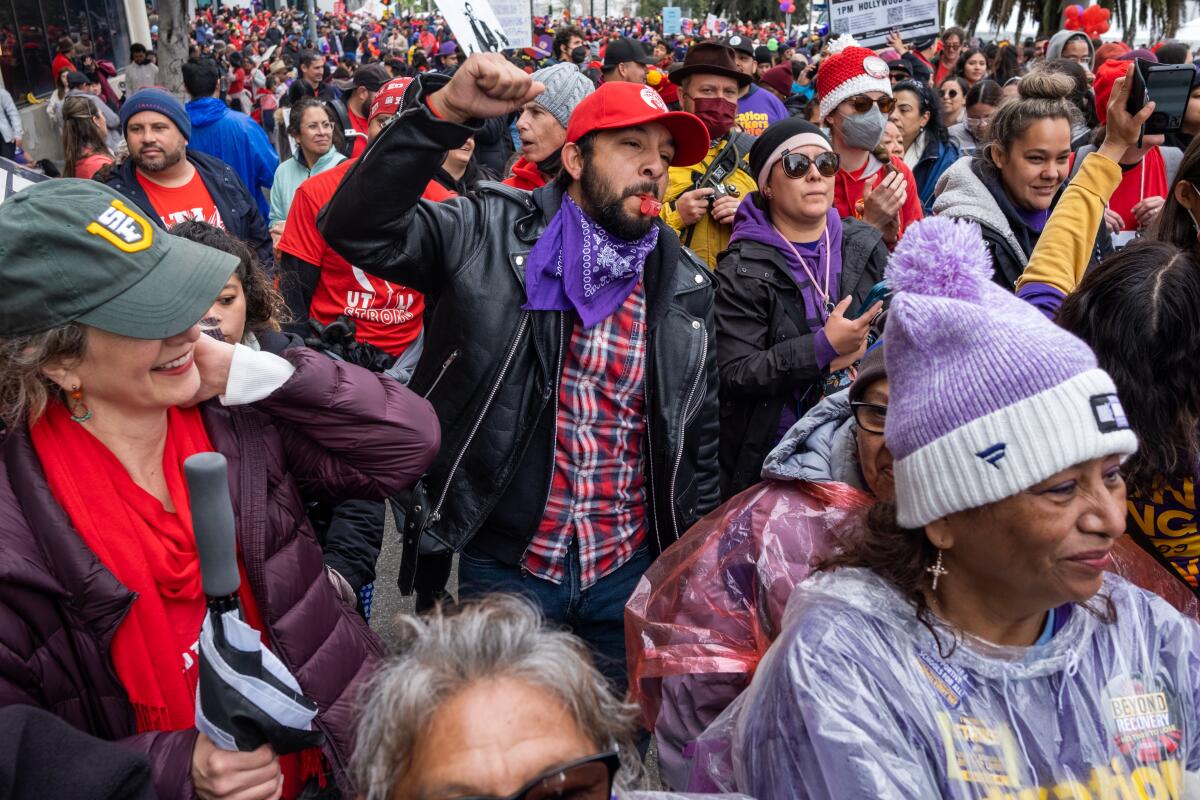
The union had defined the walkout as a three-day protest of unfair labor practices, which typically involve allegations that an employer has interfered in legally protected, union-related activity.
L.A. Unified challenged this rationale in a filing with state regulators in a last-ditch attempt to prevent the strike.
The district said that the alleged labor violations were a pretext to launch a strike before the conclusion of a legally mandated negotiation process.
The district’s legal maneuver did not stop the walkout, but the case remains active and the school system could still pursue a claim that the two unions acted illegally in walking out.
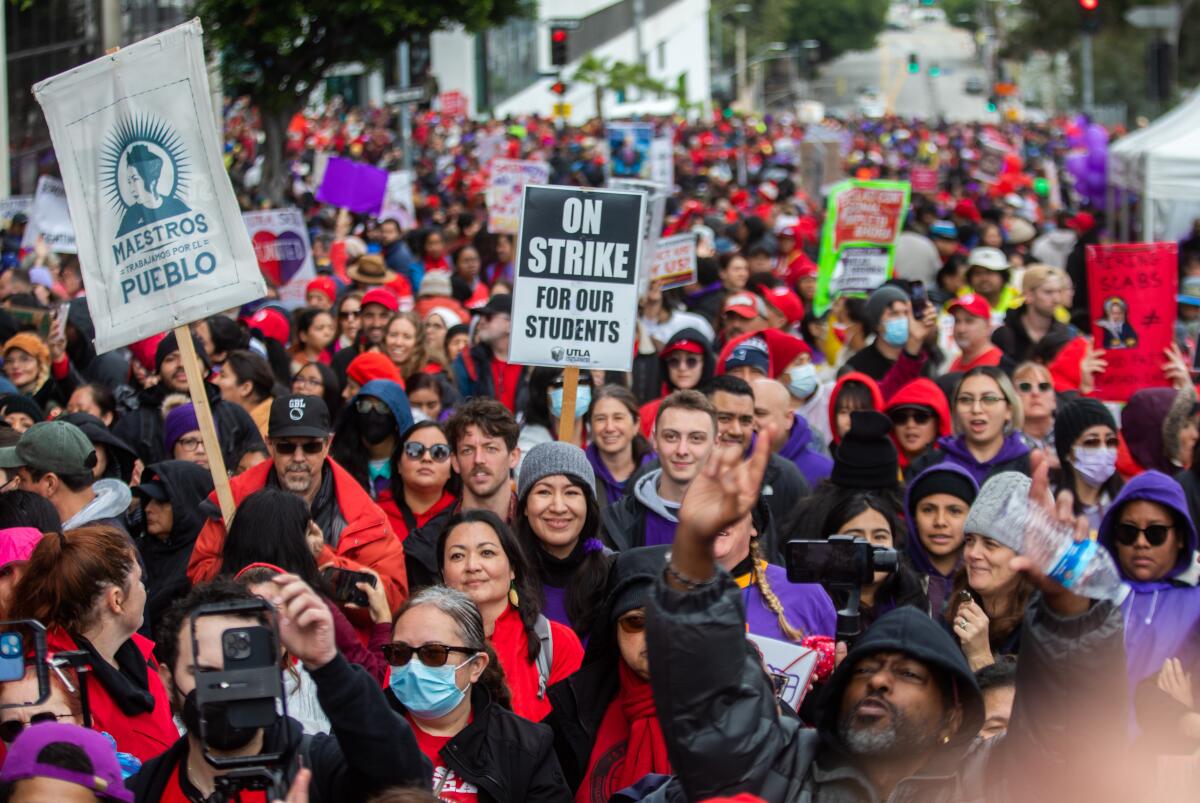
More to Read
Sign up for Essential California
The most important California stories and recommendations in your inbox every morning.
You may occasionally receive promotional content from the Los Angeles Times.
